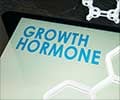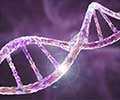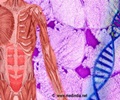Certain genetic mutations, which extend the lifespan of the C. elegans roundworm may prove useful in studying ways to extend the lifespan in animals
Certain genetic mutations, which extend the lifespan of the C. elegans roundworm may prove useful in studying ways to extend the lifespan in animals, according to a new study by researchers at the Massachusetts General Hospital (MGH).
"C. elegans mutants with extreme longevity accomplish this feat, in part, by adopting genetic programs normally restricted to the germline into somatic cells," Nature magazine quoted lead author Dr. Sean Curran, of MGH Molecular Biology, as saying."We know that germline cells are more stable than somatic cells - they live longer and are more resistant to stresses that damage other cells - and understanding the molecular pathways involved in that stability may someday allow us to devise therapies protective against age-related decline in other tissues," Dr. Curran added.
Dr. Gary Ruvkun, in whose laboratory Curran is a research fellow, has found that simple mutations in genetic pathways conserved throughout evolution can double or triple the lifespan of C. elegans, and that similar mutations in the corresponding pathways also dramatically extend mammalian lifespan.
Longevity-associated mutations are known to lead to enhanced immune response - including increased control of gene expression through RNA interference (RNAi) - in somatic cells.
The researchers point out that it is known that RNAi is among the mechanisms underlying germline cells' enhanced resistance to pathogens and other stresses.
They say that they examined whether the reactivation of germline genetic programs was involved in the extended lifespan of C. elegans mutants.
Advertisement
According to them, the mutant worms also were protected from stresses that damaged the DNA of non-mutant worms.
Advertisement
"The idea that somatic cells can reacquire genetic pathways usually restricted to germline cells is fascinating, and since germline protection is seen across species, the activity of these genes may play a role in controlling mammalian lifespan.
Understanding the mechanisms involved in this transformation could help us develop new ways to repair and even regenerate key cells and tissues," says Ruvkun.
Source-ANI
RAS












